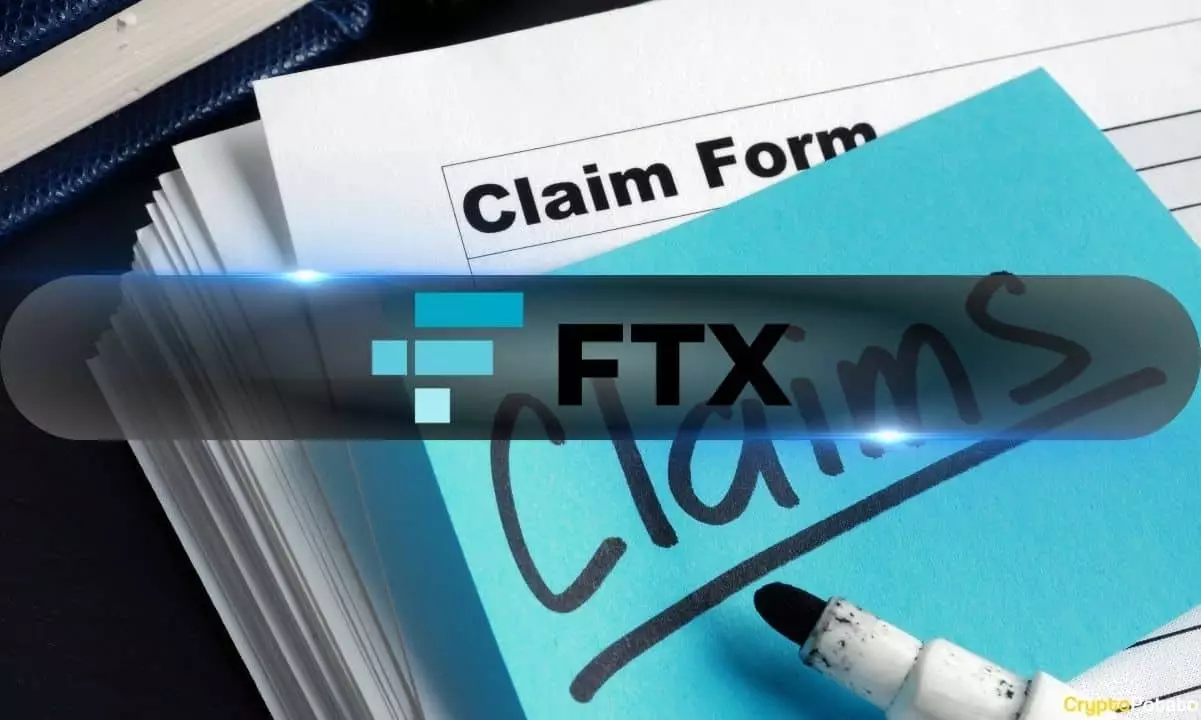In a move that has sparked both interest and criticism, the FTX Recovery Trust is set to initiate a staggering disbursement of over $5 billion to creditors starting May 30. This distribution marks only the second round of reimbursements following the catastrophic collapse of FTX in November 2022, which sent shockwaves through the cryptocurrency industry. While the announcement may seem like a beacon of hope for those left in the financial lurch, a deeper examination reveals a puzzling undertaking that highlights both the complexity of cryptocurrency dynamics and the inadequacies of the existing framework.
The latest disbursement categorizes creditors into five distinct “convenience classes,” each assigned a specific payout rate. Class 5A, for example, will receive 72%, while Class 5B will secure 54%. The structure appears meticulously arranged to reward certain classes, leaving others in limbo. One wonders: does this method of categorization merely serve as a distraction to justify unequal compensations among stakeholders? Individuals and businesses categorized as Class 7 Convenience Claims receiving 120% look curiously privileged compared to those in lower classes. In a truly equitable system, shouldn’t every creditor expect a fair resolution based on their unique situations rather than a predefined class structure?
The Implications of Distribution Partnerships
The process of distributing these funds will occur through selected service providers—Bitgo and Kraken—with funds expected to reach eligible creditors within a brief timeframe of one to three business days. However, the model comes with a crucial stipulation that raises eyebrows: customers who opt for a distribution service provider forfeit their rights to direct payouts from the bankrupt exchange. This is a fundamental flaw that could isolate some creditors, particularly those less familiar with the intricacies of cryptocurrency, and could further complicate efforts to restore financial stability for those affected.
Moreover, the notion of forfeiting direct payments could undermine trust among creditors who had already suffered losses. Will they now watch their funds funneled through intermediary services, essentially relinquishing control amidst an already tumultuous experience? Such policies promote an unsettling acknowledgment that, even within a bankrupt establishment, the balance of power skews toward the institution rather than the individuals tied to it.
The Question of Fairness in Valuation
Compounding this already complex scenario is the subject of valuation; reimbursement calculations are based on cryptocurrency values at the time of the bankruptcy filing, rather than current market standings. This approach not only invites criticism but also raises ethical concerns. Creditors are, in some cases, receiving significantly less than what they might have had they been able to exchange their assets today. Can we justify a recovery process that does not align with the evolving landscape of cryptocurrency valuation?
It’s crucial to understand that cryptocurrency is notoriously volatile, and a one-time valuation cannot do justice to its dynamic nature. What might have been a standard practice in traditional finance proves alarmingly inept in this rapidly changing environment. The insistence on clinging to outdated valuation metrics as a guide for reimbursement indicates a glaring failure of foresight by the FTX Recovery Trust. Those impacted are left grappling with the reality that their financial recovery is contingent upon arbitrary metrics established in a different economic climate.
Toward a More Inclusive Recovery Framework
As the FTX Recovery Trust gears up for this multi-phase reimbursement endeavor, it’s imperative that the decision-makers acknowledge their responsibilities by refining the processes that will dictate the future of trust among creditors. Instead of rigid classes, an approach that promotes transparency and offers fair treatment for all claimants would be a more enlightened direction. Moreover, placing greater emphasis on current valuations could instill a renewed sense of equity among those wronged by FTX’s downfall.
In light of the ongoing legal proceedings, such as the lawsuits against NFT Stars Limited and Delysium to reclaim allegedly withheld assets, the road ahead isn’t simply about financial recovery but about restoring trust in a system that has proven fragile and prone to exploitation. The implications of this second distribution must prompt a reevaluation—not only of how claims are processed but also of the ethical governance that should be upheld in technological advancement, especially in the blockchain landscape.


Leave a Reply